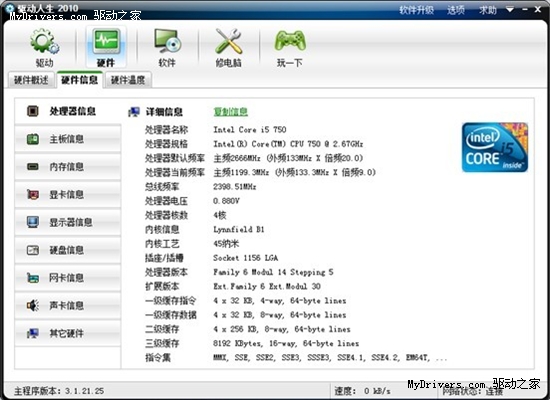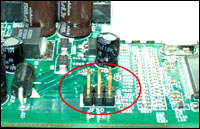本文实例讲述了php截取html字符串及自动补全html标签的方法。分享给大家供大家参考。具体分析如下:
这里总结一下关于利用php截取html字符串自动补全html标签,实际开发中会经常碰到,很多人直接先strip_tags过滤掉html标签,但是就只剩下纯文本了,可读性非常差,下面是一个函数,代码如下:
复制代码代码如下:
/**
* 截取HTML,并自动补全闭合
* @param $html
* @param $length
* @param $end
*/
function subHtml($html,$length) {
$result = '';
$tagStack = array();
$len = 0;
$contents = preg_split("~(<[^>]+?>)~si",$html, -1,PREG_SPLIT_NO_EMPTY| PREG_SPLIT_DELIM_CAPTURE);
foreach($contents as $tag)
{
if (trim($tag)=="") continue;
if(preg_match("~<([a-z0-9]+)[^/>]*?/>~si",$tag)){
$result .= $tag;
}else if(preg_match("~</([a-z0-9]+)[^/>]*?>~si",$tag,$match)){
if($tagStack[count($tagStack)-1] == $match[1]){
array_pop($tagStack);
$result .= $tag;
}
}else if(preg_match("~<([a-z0-9]+)[^/>]*?>~si",$tag,$match)){
array_push($tagStack,$match[1]);
$result .= $tag;
}else if(preg_match("~<!--.*?-->~si",$tag)){
$result .= $tag;
}else{
if($len + mstrlen($tag) < $length){
$result .= $tag;
$len += mstrlen($tag);
}else {
$str = msubstr($tag,0,$length-$len+1);
$result .= $str;
break;
}
}
}
while(!emptyempty($tagStack)){
$result .= '</'.array_pop($tagStack).'>';
}
return $result;
}
/**
* 截取中文字符串
* @param $string 字符串
* @param $start 起始位
* @param $length 长度
* @param $charset 编码
* @param $dot 附加字串
*/
function msubstr($string, $start, $length,$dot='',$charset = 'UTF-8') {
$string = str_replace(array('&', '"', '<', '>',' '), array('&', '"', '<', '>',' '), $string);
if(strlen($string) <= $length) {
return $string;
}
if(strtolower($charset) == 'utf-8') {
$n = $tn = $noc = 0;
while($n < strlen($string)) {
$t = ord($string[$n]);
if($t == 9 || $t == 10 || (32 <= $t && $t <= 126)) {
$tn = 1; $n++;
} elseif(194 <= $t && $t <= 223) {
$tn = 2; $n += 2;
} elseif(224 <= $t && $t <= 239) {
$tn = 3; $n += 3;
} elseif(240 <= $t && $t <= 247) {
$tn = 4; $n += 4;
} elseif(248 <= $t && $t <= 251) {
$tn = 5; $n += 5;
} elseif($t == 252 || $t == 253) {
$tn = 6; $n += 6;
} else {
$n++;
}
$noc++;
if($noc >= $length) {
break;
}
}
if($noc > $length) {
$n -= $tn;
}
$strcut = substr($string, 0, $n);
} else {
for($i = 0; $i < $length; $i++) {
$strcut .= ord($string[$i]) > 127 ? $string[$i].$string[++$i] : $string[$i];
}
}
return $strcut.$dot;
}
/**
* 取得字符串的长度,包括中英文。
*/
function mstrlen($str,$charset = 'UTF-8'){
if (function_exists('mb_substr')) {
$length=mb_strlen($str,$charset);
} elseif (function_exists('iconv_substr')) {
$length=iconv_strlen($str,$charset);
} else {
preg_match_all("/[x01-x7f]|[xc2-xdf][x80-xbf]|xe0[xa0-xbf][x80-xbf]|[xe1-xef][x80-xbf][x80-xbf]|xf0[x90-xbf][x80-xbf][x80-xbf]|[xf1-xf7][x80-xbf][x80-xbf][x80-xbf]/", $text, $ar);
$length=count($ar[0]);
}
return $length;
}
* 截取HTML,并自动补全闭合
* @param $html
* @param $length
* @param $end
*/
function subHtml($html,$length) {
$result = '';
$tagStack = array();
$len = 0;
$contents = preg_split("~(<[^>]+?>)~si",$html, -1,PREG_SPLIT_NO_EMPTY| PREG_SPLIT_DELIM_CAPTURE);
foreach($contents as $tag)
{
if (trim($tag)=="") continue;
if(preg_match("~<([a-z0-9]+)[^/>]*?/>~si",$tag)){
$result .= $tag;
}else if(preg_match("~</([a-z0-9]+)[^/>]*?>~si",$tag,$match)){
if($tagStack[count($tagStack)-1] == $match[1]){
array_pop($tagStack);
$result .= $tag;
}
}else if(preg_match("~<([a-z0-9]+)[^/>]*?>~si",$tag,$match)){
array_push($tagStack,$match[1]);
$result .= $tag;
}else if(preg_match("~<!--.*?-->~si",$tag)){
$result .= $tag;
}else{
if($len + mstrlen($tag) < $length){
$result .= $tag;
$len += mstrlen($tag);
}else {
$str = msubstr($tag,0,$length-$len+1);
$result .= $str;
break;
}
}
}
while(!emptyempty($tagStack)){
$result .= '</'.array_pop($tagStack).'>';
}
return $result;
}
/**
* 截取中文字符串
* @param $string 字符串
* @param $start 起始位
* @param $length 长度
* @param $charset 编码
* @param $dot 附加字串
*/
function msubstr($string, $start, $length,$dot='',$charset = 'UTF-8') {
$string = str_replace(array('&', '"', '<', '>',' '), array('&', '"', '<', '>',' '), $string);
if(strlen($string) <= $length) {
return $string;
}
if(strtolower($charset) == 'utf-8') {
$n = $tn = $noc = 0;
while($n < strlen($string)) {
$t = ord($string[$n]);
if($t == 9 || $t == 10 || (32 <= $t && $t <= 126)) {
$tn = 1; $n++;
} elseif(194 <= $t && $t <= 223) {
$tn = 2; $n += 2;
} elseif(224 <= $t && $t <= 239) {
$tn = 3; $n += 3;
} elseif(240 <= $t && $t <= 247) {
$tn = 4; $n += 4;
} elseif(248 <= $t && $t <= 251) {
$tn = 5; $n += 5;
} elseif($t == 252 || $t == 253) {
$tn = 6; $n += 6;
} else {
$n++;
}
$noc++;
if($noc >= $length) {
break;
}
}
if($noc > $length) {
$n -= $tn;
}
$strcut = substr($string, 0, $n);
} else {
for($i = 0; $i < $length; $i++) {
$strcut .= ord($string[$i]) > 127 ? $string[$i].$string[++$i] : $string[$i];
}
}
return $strcut.$dot;
}
/**
* 取得字符串的长度,包括中英文。
*/
function mstrlen($str,$charset = 'UTF-8'){
if (function_exists('mb_substr')) {
$length=mb_strlen($str,$charset);
} elseif (function_exists('iconv_substr')) {
$length=iconv_strlen($str,$charset);
} else {
preg_match_all("/[x01-x7f]|[xc2-xdf][x80-xbf]|xe0[xa0-xbf][x80-xbf]|[xe1-xef][x80-xbf][x80-xbf]|xf0[x90-xbf][x80-xbf][x80-xbf]|[xf1-xf7][x80-xbf][x80-xbf][x80-xbf]/", $text, $ar);
$length=count($ar[0]);
}
return $length;
}
实例,代码如下:
复制代码代码如下:
* @param 要截取的HTML $str
* @param 截取的数量 $num
* @param 是否需要加上更多 $more
* @return 截取串
*/
function phpos_chsubstr_ahtml($str,$num,$more=false)
{
$leng=strlen($str);
if($num>=$leng)
return $str;
$word=0;
$i=0; /** 字符串指针 **/
$stag=array(array()); /** 存放开始HTML的标志 **/
$etag=array(array()); /** 存放结束HTML的标志 **/
$sp = 0;
$ep = 0;
while($word!=$num)
{
if(ord($str[$i])>128)
{
//$re.=substr($str,$i,3);
$i+=3;
$word++;
}
else if ($str[$i]=='<')
{
if ($str[$i+1] == '!')
{
$i++;
continue;
}
if ($str[$i+1]=='/')
{
$ptag=&$etag ;
$k=&$ep;
$i+=2;
}
else
{
$ptag=&$stag;
$i+=1;
$k=&$sp;
}
for(;$i<$leng;$i++)
{
if ($str[$i] == ' ')
{
$ptag[$k] = implode('',$ptag[$k]);
$k++;
break;
}
if ($str[$i] != '>')
{
$ptag[$k][]=$str[$i];
continue;
}
else
{
$ptag[$k] = implode('',$ptag[$k]);
$k++;
break;
}
}
$i++;
continue;
}
else
{
//$re.=substr($str,$i,1);
$word++;
$i++;
}
}
foreach ($etag as $val)
{
$key1=array_search($val,$stag);
if ($key1 !== false) unset($stag[$key]);
}
foreach ($stag as $key => $val)
{
if (in_array($val,array('br','img'))) unset($stag[$key1]);
}
array_reverse($stag);
$ends = '</'.implode('></',$stag).'>';
$re = substr($str,0,$i).$ends;
if($more) $re.='...';
return $re;
}
* @param 截取的数量 $num
* @param 是否需要加上更多 $more
* @return 截取串
*/
function phpos_chsubstr_ahtml($str,$num,$more=false)
{
$leng=strlen($str);
if($num>=$leng)
return $str;
$word=0;
$i=0; /** 字符串指针 **/
$stag=array(array()); /** 存放开始HTML的标志 **/
$etag=array(array()); /** 存放结束HTML的标志 **/
$sp = 0;
$ep = 0;
while($word!=$num)
{
if(ord($str[$i])>128)
{
//$re.=substr($str,$i,3);
$i+=3;
$word++;
}
else if ($str[$i]=='<')
{
if ($str[$i+1] == '!')
{
$i++;
continue;
}
if ($str[$i+1]=='/')
{
$ptag=&$etag ;
$k=&$ep;
$i+=2;
}
else
{
$ptag=&$stag;
$i+=1;
$k=&$sp;
}
for(;$i<$leng;$i++)
{
if ($str[$i] == ' ')
{
$ptag[$k] = implode('',$ptag[$k]);
$k++;
break;
}
if ($str[$i] != '>')
{
$ptag[$k][]=$str[$i];
continue;
}
else
{
$ptag[$k] = implode('',$ptag[$k]);
$k++;
break;
}
}
$i++;
continue;
}
else
{
//$re.=substr($str,$i,1);
$word++;
$i++;
}
}
foreach ($etag as $val)
{
$key1=array_search($val,$stag);
if ($key1 !== false) unset($stag[$key]);
}
foreach ($stag as $key => $val)
{
if (in_array($val,array('br','img'))) unset($stag[$key1]);
}
array_reverse($stag);
$ends = '</'.implode('></',$stag).'>';
$re = substr($str,0,$i).$ends;
if($more) $re.='...';
return $re;
}
PHP截取字符串,生成文章摘要,我们在写BLOG时经常需要显示文章前一部分,但是又怕不恰当截断破坏封闭标签以造成整个文档结构破坏,代码如下:
复制代码代码如下:
function text_zhaiyao($text,$length){ //文章摘要生成函数 $test:内容 $length:摘要长度
global $Briefing_Length;
mb_regex_encoding("UTF-8");
if(mb_strlen($text) <= $length ) return $text;
$Foremost = mb_substr($text, 0, $length);
$re = "<(/?)
(P|DIV|H1|H2|H3|H4|H5|H6|ADDRESS|PRE|TABLE|TR|TD|TH|INPUT|SELECT|TEXTAREA|OBJECT|A|UL|OL|LI|
BASE|META|LINK|HR|BR|PARAM|IMG|AREA|INPUT|SPAN)[^>]*(>?)";
$Single = "/BASE|META|LINK|HR|BR|PARAM|IMG|AREA|INPUT|BR/i";
$Stack = array(); $posStack = array();
mb_ereg_search_init($Foremost, $re, 'i');
while($pos = mb_ereg_search_pos()){
$match = mb_ereg_search_getregs();
/* [Child-matching Formulation]:
$matche[1] : A "/" charactor indicating whether current "<...>" Friction is
Closing Part
$matche[2] : Element Name.
$matche[3] : Right > of a "<...>" Friction
*/
if($match[1]==""){
$Elem = $match[2];
if(mb_eregi($Single, $Elem) && $match[3] !=""){
continue;
}
global $Briefing_Length;
mb_regex_encoding("UTF-8");
if(mb_strlen($text) <= $length ) return $text;
$Foremost = mb_substr($text, 0, $length);
$re = "<(/?)
(P|DIV|H1|H2|H3|H4|H5|H6|ADDRESS|PRE|TABLE|TR|TD|TH|INPUT|SELECT|TEXTAREA|OBJECT|A|UL|OL|LI|
BASE|META|LINK|HR|BR|PARAM|IMG|AREA|INPUT|SPAN)[^>]*(>?)";
$Single = "/BASE|META|LINK|HR|BR|PARAM|IMG|AREA|INPUT|BR/i";
$Stack = array(); $posStack = array();
mb_ereg_search_init($Foremost, $re, 'i');
while($pos = mb_ereg_search_pos()){
$match = mb_ereg_search_getregs();
/* [Child-matching Formulation]:
$matche[1] : A "/" charactor indicating whether current "<...>" Friction is
Closing Part
$matche[2] : Element Name.
$matche[3] : Right > of a "<...>" Friction
*/
if($match[1]==""){
$Elem = $match[2];
if(mb_eregi($Single, $Elem) && $match[3] !=""){
continue;
}
希望本文所述对大家的php程序设计有所帮助。

















